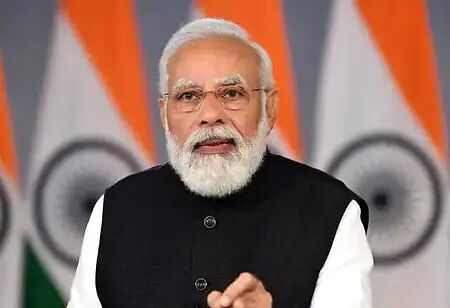
PM’s Two Days Visit to Karnataka: What are the Highlights?


India has created a friendly environment for the digital markets internationally. The Indian economy is constantly evolving. Narendra Modi is the first Prime Minister of India in 20 years to attend the summit of business leaders, economists and journalists. The PM delivered a keynote on the summit indicating the commitment to develop the relationship with the US and other western economies. Now PM is visiting Karnataka to inaugurate the few programs in Bengaluru such as 100 percent electrification of Konkan Railways, Launching 150 technology hubs, and attending eighth International Yoga Day celebrations in Mysore.
PM’s Visit to Bengaluru
To boost the connectivity and enhance the mobility in Bengaluru, PM laid the foundation stone of Bengaluru Suburban Rail Project (BSRP) to connect the capital city with its suburbs and satellite townships. The project will be built at a cost of over Rs 15,700 crore, envisages four corridors with a total route length of over 148 km. The PM also has put cornerstone for the redevelopment of Bengaluru Cantt and Yesvantpur Junction railway station to be developed at a cost of around Rs. 500 crore and Rs. 375 crore respectively.
The most highlighted thing of the PM’s two days event in Karnataka is dedicating India’s first air-conditioned railway station Sir M Visvesvaraya Railway Station at Baiyappanahalli. It has been developed on the outlines of a modern airport at a cost of Rs. 315 crore. The PM also flagged off electric trains from Udupi, Madagaon and Ratnagiri as part of launching the 100 percent electrification of the Konkan railway line (about 740 km) from Roha (Maharashtra) to Thokur (Karnataka). The electrification has been done at a cost of more than 1,280 crore. Modi launched two railway line doubling projects Arsikere to Tumkuru (around 96 km) and Yelahanka to Penukonda (around 120 km) by flagging off passenger trains and MEMU service respectively.
As part of a two days event the PM laid base of two sections of the Bengaluru Ring Road project to mitigate traffic congestion in the city. PM laid the cornerstone of other road projects such as six-laning of Nelamangala-Tumkur section of NH-48; widening of Punjalkatte-Charmadi section of NH-73; rehabilitation and upgradation of a section of NH-69. The cumulative cost to be incurred is about Rs. 3,150 crore and also laid foundation stone for Multi Modal Logistics Park, which is being developed at Muddalinganahalli, about 40 km from Bengaluru at a cost of about Rs. 1,800 crore. The project helps in lowering the transportation, handling and secondary freight costs.
The PM inaugurated the new campus of Dr B R Ambedkar School of Economics (BASE) University, Bengaluru. The residential university was set up in 2017 in recognition of the exemplary contributions made by Dr B R Ambedkar towards the development of Independent India and as a tribute to his memory on the occasion of his 125th birth anniversary.
On behalf of the two days program the PM also inaugurated the 150 Technology Hubs that have been developed by transforming the Industrial Training Institutes (ITIs) across Karnataka. This unique initiative developed at a cost of over Rs 4,600 crore is supported by many industry partners. It aims to create a skilled workforce to address Industry 4.0 manpower needs. The Technology Hubs, through its various innovative courses, will provide high skill training in cutting-edge technology and improve opportunities for ITI graduates in employment and entrepreneurship.
At IISc Bengaluru, the PM inaugurated the Center for Brain Research (CBR), the foundation stone of which was also laid by the PM himself. The center is developed as a one-of-its-kind research facility that will be focusing on carrying out the vital research to provide evidence-based public health interventions to manage age-related brain disorders. During the program, PM also laid the stone for 832-bedded Bagchi Parthasarathy Multispecialty Hospital. The hospital, which will be a major fillip to clinical research in the country, will be developed on the IISc campus. It will help integrate science, engineering and medicine at the prestigious institute.
Highlights of PM’s Mysore Visit
The Maharaja College ground gave a warm welcome to the PM and he laid the mainspring of the Coaching terminal for sub-urban traffic at Naganahalli Railway Station that will be developed at a cost of over Rs. 480 crore. The terminal will also have a MEMU shed and that would decongest the existing Mysore Yard, facilitating running of more MEMU train services and long distance trains from Mysore, improving both connectivity and tourism potential of the region. This project helps the daily passengers who travel long destinations.
During the event PM also launched the Center of Excellence for persons with communication disorders at the All India Institute of Speech and Hearing (AIISH). It is equipped with state-of-the art laboratories and facilities for diagnosis, assessment and rehabilitation of persons with communication disorders
The PM also attended the eighth International yoga day function and did Yoga with the students. Integrating the ‘Azadi Ka Amrit Mahotsav’ with celebrations of 8th IDY, Mass Yoga demonstrations will also is organized at 75 iconic locations across the country under the leadership of 75 Union Ministers, along with the Yoga Demonstration by the Prime Minister at Mysore. The Yoga demonstrations held by various educational, social, political, cultural, religious, corporate and other civil society organizations and will be attended by crores across the country.
The PM’s Yoga program at Mysore is also part of the novel program ‘Guardian Yoga Ring’ which is a collaborative exercise between 79 countries and United Nations organizations along with Indian Missions abroad to illustrate Yoga’s unifying power that surpasses national boundaries. As the sun apparently moves from the east to the west across the world, the Mass Yoga Demonstrations in the participating countries, if seen from any one point on Earth, will seem to be happening one after the other, almost in tandem, thus underlining the concept of ‘One Sun, One Earth’.